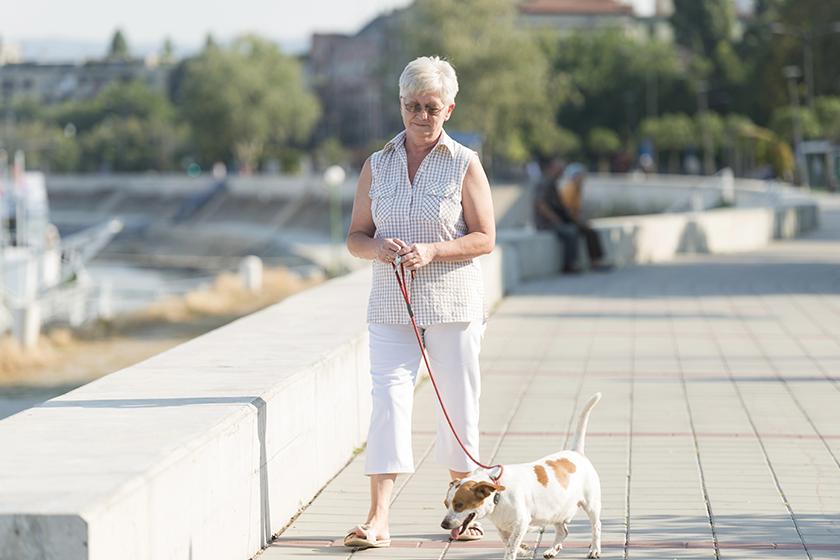Walking a dog can be a rewarding activity for elderly owners, providing an opportunity for exercise and companionship. It is important for elderly dog owners to follow the right strategies to ensure a safe and enjoyable experience. Elderly dog walking offers a great way for residents to connect with their pets and enjoy outdoor activities. By being mindful of the time, weather, pace, and path, elderly dog owners can maintain their own well-being while enjoying their walks with their dogs.
Choose the Right Time and Weather for Comfortable Walks
The time and weather play a significant role in the enjoyment and safety of dog walks for elderly owners. Morning and late afternoon are often the best times for walks because they tend to be cooler and less crowded. During hot days, it’s important to avoid midday heat to prevent heat exhaustion in both owners and dogs. Cloudy days can offer a more comfortable experience, allowing elderly owners to walk without worrying about excessive sun exposure.
Use Proper Leashes and Harnesses for Safety and Control
Using the right equipment can make all the difference in ensuring a safe and pleasant walking experience for both elderly owners and their dogs. Proper leashes and harnesses provide better control and prevent dogs from pulling too hard, reducing the risk of falls. Retractable leashes are not recommended as they offer less control in emergencies. Instead, a sturdy leash and a comfortable harness that fits well can help maintain safety and control during walks.
Maintain a Moderate Pace to Suit Both Owner and Dog
A moderate pace is essential for enjoyable walks, especially for elderly owners and their dogs. Walking too fast can lead to fatigue or injuries, while a slow pace may not provide enough exercise. It’s important to find a balance that suits both the owner and the dog, considering the dog’s breed, age, and energy level. Short and steady walks are often the best choice, allowing elderly owners to keep up without overexertion while still offering their dogs the activity they need.
Incorporate Rest Stops and Hydration Breaks During Walks
Incorporating rest stops and hydration breaks is crucial for a comfortable walking experience, especially for elderly owners and their dogs. Resting allows both to recover their energy and enjoy the surroundings. During hot days, frequent breaks are essential to prevent overheating. Carrying water for both the owner and the dog ensures they stay hydrated throughout the walk. Finding a shaded area for breaks can provide relief from the sun, enhancing comfort and safety during the outing.
Opt for Well-Maintained Paths and Parks for Smooth Walking
Choosing the right paths and parks is essential for a smooth walking experience. Well-maintained paths offer a safer environment, reducing the risk of trips and falls. Parks with clear signage and dedicated walking areas provide a pleasant atmosphere for both dogs and their elderly owners. Opting for paths that are less crowded and free from obstacles ensures a stress-free walk. Familiarizing oneself with the route can also help prevent getting lost, allowing for a worry-free outing with a furry friend.
Engage in Elderly Dog Walking at Our Retirement Community
Our commitment to elderly dog walking ensures residents have a safe and enjoyable experience with their furry friends. We emphasize choosing the right time and weather for walks, offering tailored advice and assistance. Our retirement community provides well-maintained paths and parks for comfortable walks. We are dedicated to enhancing the lives of our residents, ensuring they enjoy quality time with their pets.







